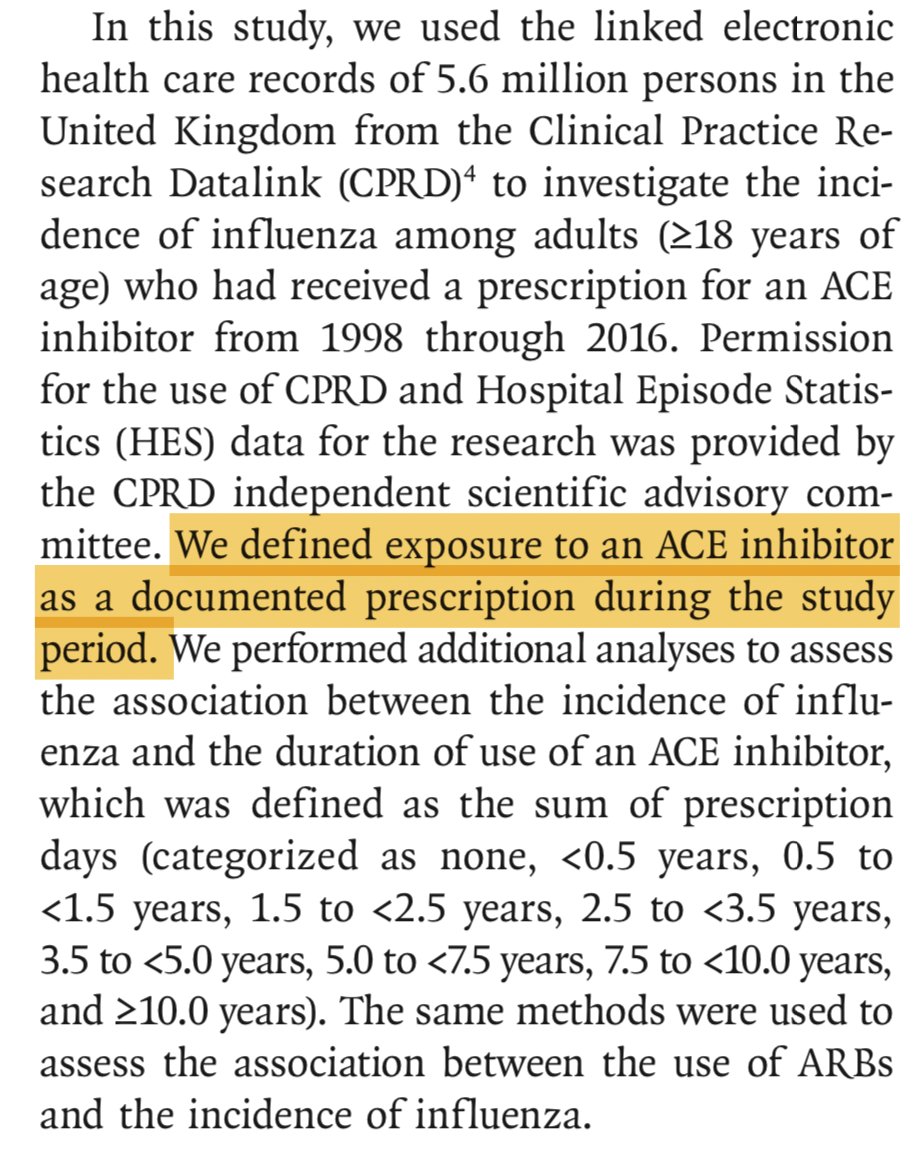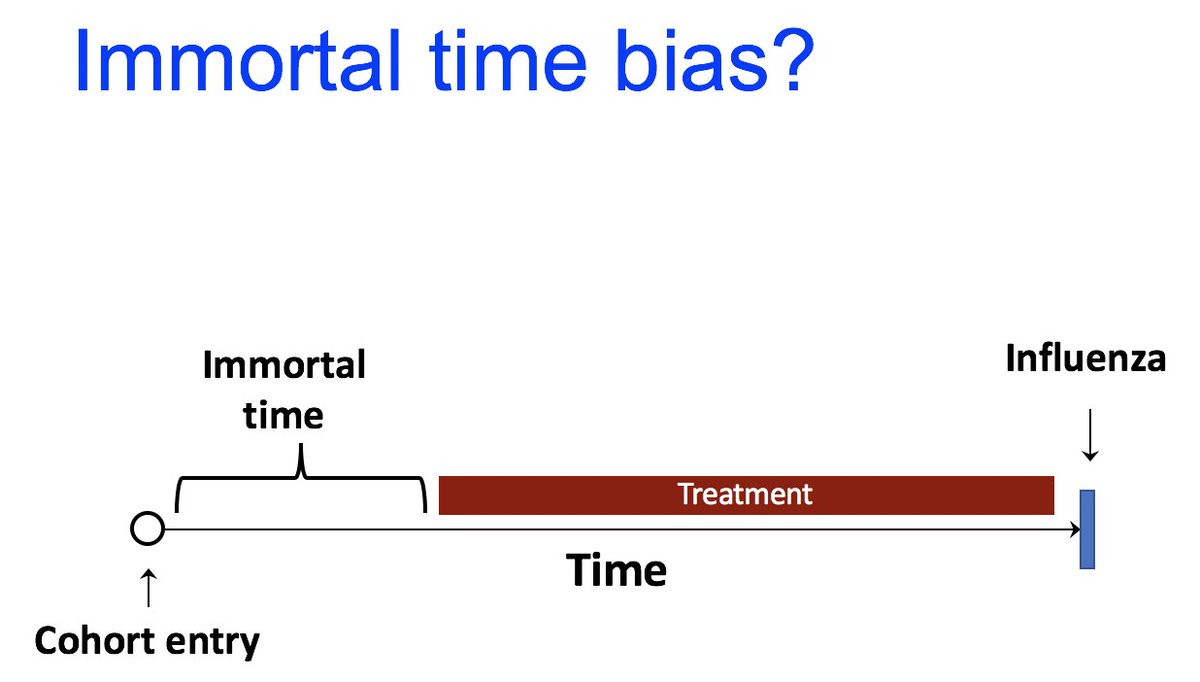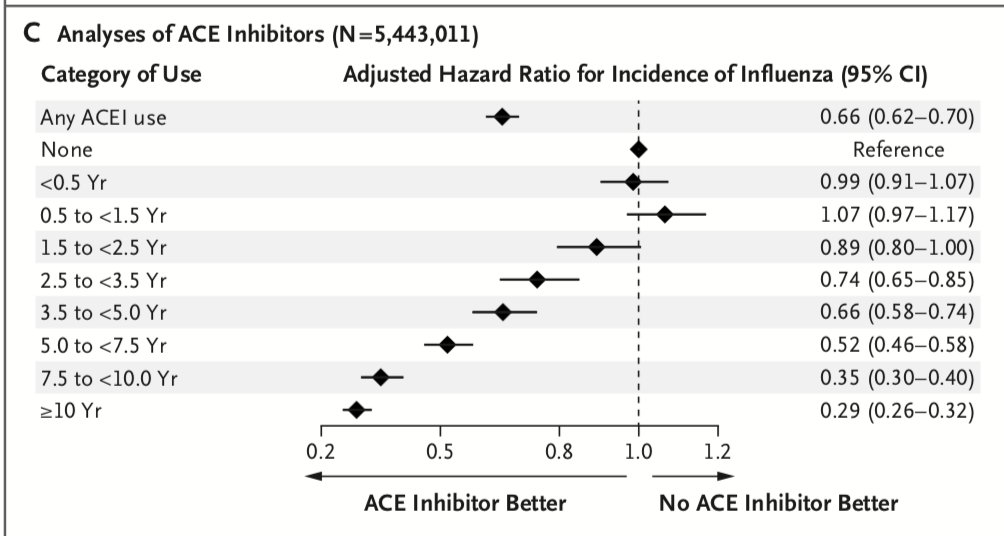2nd time in 2 days. Study in a major journal that is concerning for immortal time bias. This time, @NEJM:
https://www.nejm.org/doi/full/10.1056/NEJMc2005396?query=RP
I">https://www.nejm.org/doi/full/... can& #39;t stress this enough: if a study compares Tx. vs. no Tx, it is at risk for immortal time bias!
No exceptions.
How to avoid?? 1/
https://www.nejm.org/doi/full/10.1056/NEJMc2005396?query=RP
I">https://www.nejm.org/doi/full/... can& #39;t stress this enough: if a study compares Tx. vs. no Tx, it is at risk for immortal time bias!
No exceptions.
How to avoid?? 1/
Immortal time bias creates SPURIOUS PROTECTIVE ASSOCIATIONS.
Why am I worried about immortal time bias here? I became concerned after reading this section of the methods:
2/
Why am I worried about immortal time bias here? I became concerned after reading this section of the methods:
2/
Why is this a red flag? 1st, because time zero for follow-up is not specified. 2nd, it appears that Tx was not modeled as a time-varying exposure.
At this point, you may be asking “What the heck immortal time bias?”. Here a great paper:
https://www.bmj.com/content/340/bmj.b5087
3/">https://www.bmj.com/content/3...
At this point, you may be asking “What the heck immortal time bias?”. Here a great paper:
https://www.bmj.com/content/340/bmj.b5087
3/">https://www.bmj.com/content/3...
It is a built in survival advantage for treated patients. To be treated, one must survive long enough to receive treatment. The period of time from cohort entry to Tx initiation is, by definition, immortal
Untreated persons are not subject to this constraint.
4/
Untreated persons are not subject to this constraint.
4/
In effect, treated patients are credited with time during which they were not actually treated.
The solution --> model treatment as time varying.
Thus, for treated patients, time during follow-up during which they were not exposed is classified as unexposed.
This solves it
The solution --> model treatment as time varying.
Thus, for treated patients, time during follow-up during which they were not exposed is classified as unexposed.
This solves it
What’s most concerning in this study, is that they might be confusing immortal time bias for a strong duration-effect response.
If you have to survive long enough to be treated, you have to survive even longer (about 10 years or so) to be treated for 10 years.
6/
If you have to survive long enough to be treated, you have to survive even longer (about 10 years or so) to be treated for 10 years.
6/
I will also say that immortal time bias can be avoided by changing the study question from treated vs. untreated to treated with one drug vs. another drug, because there is a natural time zero for each group, and both groups have to survive long enough to be treated.
7/
7/
Caveats here are that the two drugs are used for sufficiently similar indications. This approach also can greatly reduce confounding.
See this great review on the motivation for active comparator designs. https://www.ncbi.nlm.nih.gov/pmc/articles/PMC4778958/">https://www.ncbi.nlm.nih.gov/pmc/artic...
See this great review on the motivation for active comparator designs. https://www.ncbi.nlm.nih.gov/pmc/articles/PMC4778958/">https://www.ncbi.nlm.nih.gov/pmc/artic...

 Read on Twitter
Read on Twitter




